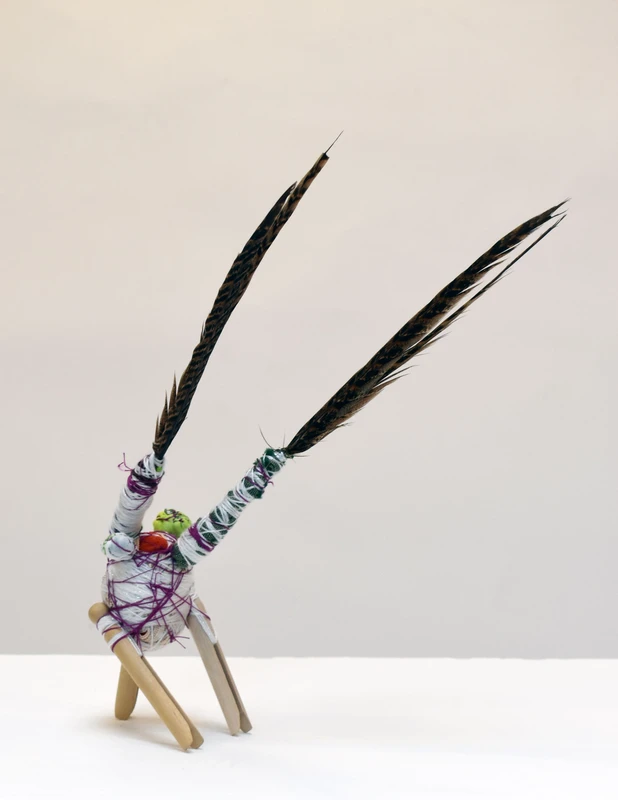Andrew Omoding: Animals to Remember Uganda
26 Apr-23 Jun 2024
PV 25 Apr 2024, 6.30-9.30pm


In an ambitious new commission developed site-responsively for Gallery Three and the Reading Room, Omoding will repurpose abandoned materials and objects, interweaving them with new metalwork produced in a London foundry, music, and video in an installation that embraces the characteristic exuberance and generosity of his practice.
Omoding’s work is largely autobiographical, infused with memories of his childhood years in Uganda. Led by an inquisitivenature and discerning eye, he salvages materials then choreographs them in complex structures that sit between figuration and abstraction. Spools that store fibres and threads, and much larger scale equivalents that have an industrial purpose, are a recurring motif in the installation. He masterfully binds, wraps, stitches, sutures, and layers materials with an intuitive, systematic and dynamic approach to colour texture and form, and an innate sense of volume, weight, balance and spatial
values.
Music is a backdrop for the creation and appreciation of Omoding’s work—often traditional Ugandan folksongs or contemporary African pop music that he plays whilst working in his London studio. The energy and rhythm of the music directly informs the pace of his work, as well as the improvised movements of his fingers and hands. Some objects are scaled to his body to be used performatively, as instruments.
In a much-celebrated open studio presentation at Camden Art Centre in 2019, Omoding created a series of makeshift shelters, or tents. Constructed with found fabrics, stitched and suspended like floating patchworks, these textile constructions came from the heart of a family tradition and the love and care of familial bonds. These provisional structures also bore relation to homes created out of necessity, wherever one finds oneself and with whatever protection is at hand—a site of refuge. The trauma of migration, of leaving home and making a new one in a foreign land, is a relevant subject in Omoding’s biography. He immigrated to the UK as a refugee from the Ugandan civil war when he was 12 years old, to re-join his mother who he hadn’t seen since he was nine months old.
Omoding’s neurodivergence is reflected in his work in the way in which he processes his experiences, past and present. Amid the complex and at times contradictory nature of everyday life, Omoding looks to material, sound, and movement to communicate, finding embodied expression in the energy and formal qualities of sculpture, welcoming the audience into the experience, and making space for them to conjure their own memories and associations.